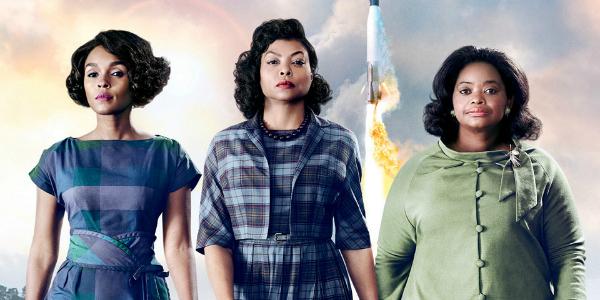Now Showing: Hidden Figures
January 9, 2017
With a stellar cast and a meaningful message, the newest civil rights movie, “Hidden Figures” made its way into most theatres this past Friday. Based on the true stories of professional African-American women in the early 1960s, the film explores the experiences of three female NASA employees.
While the plot may seem a bit slow for those looking for an action-packed adventure, the movie holds its own with its intelligent characters and poignant, thought-provoking storyline.
Placed at the time of the space race against Russia during the Cold War, the plot revolves around NASA’s rush to get an American man orbiting the planet. Behind the flurry of attention on enthusiastic astronaut John Glenn (Glen Powell), NASA’s group of mathematicians and engineers struggle to figure out how to get him back to Earth safely.
In desperation, the director of the Space Task team, Al Harrison (Kevin Costner), allows mathematical genius Katherine Goble (Taraji P. Henson) onto the team, taking her from the group of female “Colored Computers” who work at NASA. As her character becomes integral to the team, Henson does a fantastic job portraying the daily prejudices and blatant racism that an African-American woman would face in a room full of white male mathematicians in 1962, regardless of her qualifications.
Among the group is Paul Stafford (Jim Parsons), a confident and intelligent head engineer that refuses to work cooperatively with Katherine. To Stafford’s dismay, Harrison pushes his employees to work together to achieve their goals despite their differences. Costner plays a determined,understanding director, and is one of the most compelling characters of the movie.
At the same time, Katherine’s close friends Dorothy Vaughan (Octavia Spencer) and Mary Jackson (Janelle Monáe) face their own challenges at NASA. Despite being an obvious fit for the job, Vaughan is repeatedly denied the position of supervisor over the group of “Colored Computers.” Jackson works toward her goal of being the first black woman engineer in the country, and fights for the right to take classes for engineering at an all-white school.
To give the movie a realistic ‘60s feel, each costume is well thought out and suited to both the character and time period, while Pharrell William’s soundtrack bring a bright, old-fashioned bounce to the background, reflecting a period of jazz and rock.
Overall, the movie is both entertaining and touching, bringing to light the unjust ways African American women were treated in the time period. Without being overly emotional and dramatic, “Hidden Figures” is able to explore prejudices against both women and African Americans, and show the “hidden figures” behind the scenes of scientific progress at the time – those who did not get the credit and attention deserved despite the work they had done.









